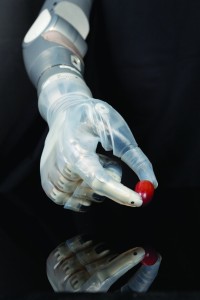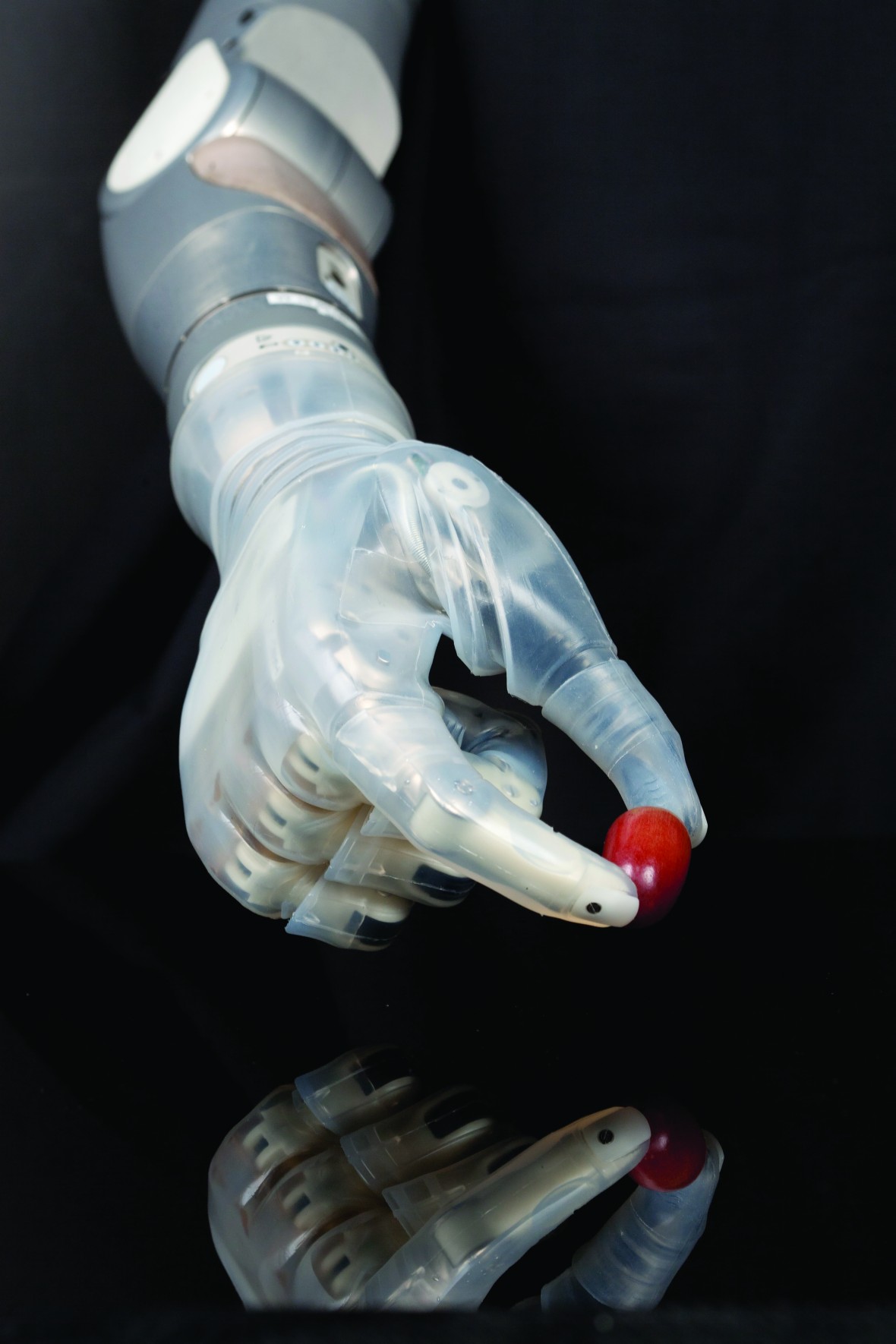
From Star Wars to Real Life: New Prosthesis Transforms Lives
From Star Wars to Real Life: New Prosthesis Transforms Lives
Inspired by science fiction. Driven by science. Enabled by innovation.
Although Luke Skywalker makes only a cameo appearance in the latest Star Wars® film, his reappearance is also awakening interest in a prosthetic limb nicknamed for the fictional hero with a cybernetic hand. (Fans will recall that the bionic appendage replaced Luke’s right hand, which he lost in a lightsaber duel with Darth Vader in Star Wars Episode V: The Empire Strikes Back*.)

The DEKA Arm—which its inventor, Dean Kamen , affectionately calls “Luke”—is a real device created by the engineering minds at Kamen’s New Hampshire–based company, DEKA Research and Development. Luke, the most advanced prosthetic arm yet approved by the U.S. Food and Drug Administration (FDA), translates signals from muscles in order to perform complex tasks, such as flexing fingers and grasping objects. It’s a transformative innovation in upper-limb prosthetics for amputees.
From Science Fiction to Medical Fact
When the FDA approved the device for marketing in 2014, it called the DEKA Arm System “the first prosthetic arm that can perform multiple, simultaneous powered movements controlled by electrical signals from electromyogram (EMG) electrodes” that detect electrical activity in muscles close to where the prosthesis is attached. The electrical signals from the electrodes and other user input devices are then converted by the arm’s main computer to control up to 10 powered joints.
Among the DEKA Arm’s most innovative features is the ability of its wrist and fingers to adjust positions to achieve multiple different user-selectable grips. In addition, force sensors in the hand enable the arm’s user to precisely control the grasp. The prosthetic arm is similar in size and weight to a natural limb, and it can be controlled by a variety of inputs. A computer on the prosthesis receives the EMG signals and interprets them to make fingers open or close, or to change the grip configuration to let the user pick up a coin, for example.
To perform such complex movements, the DEKA engineers realized they also needed additional control inputs. Their solution was to implement special sensors on the user’s feet that wirelessly transmit signals to the arm’s computer, allowing the user to control multiple joints simultaneously.
Multiple Analog Devices, Inc., (ADI) components—including instrumentation amplifiers, digital isolators, and dual operational amplifiers—were integrated into DEKA’s signal chain design. These high-performance components help DEKA ensure that the arm met critical requirements in terms of the system’s safety, effectiveness, and readiness for market.
These and other ADI components were among those tested during the arm system’s FDA approval process, when the agency reviewed data relating to software and electrical and battery systems, mitigations to prevent or stop unintended movements of the arm and hand mechanisms, durability testing (such as ability to withstand exposure to common environmental factors such as dust and light rain), and impact testing.
Innovative Technology Sparks Transformative Possibilities
This radical advancement in prosthetics stems from a challenge that had been decades in the making. Before the DEKA arm, prostheses were based on designs pioneered more than 100 years ago. And while lower-limb technology has become more advanced over the decades, upper-limb technology has lagged behind because of its more difficult medical and engineering issues. So in 2006, the U.S. government’s Defense Advanced Research Projects Agency (DARPA) set up a program called Revolutionizing Prosthetics with an ambitious goal: design a prosthetic arm with the functionality of a natural limb.
DARPA approached DEKA to create a solution that would dramatically improve the quality of life for amputees—a solution that was delicate enough to pick up a grape, yet rugged enough to handle tools such as a hand drill. DEKA engineers achieved that goal. Now, with the DEKA Arm, an amputee can safely do things such as hold a cup of coffee, tie shoelaces, and handle zippers—activities that were previously difficult to do with “passive” prostheses.
As part of its FDA application, the DEKA system underwent an optimization study that was funded by the Department of Veterans Affairs (VA) and carried out at VA and U.S. Department of Defense medical centers. Ninety percent of the amputees who participated in the study were able to perform common but complex household and self-care tasks with the DEKA Arm that they were not able to perform with their existing prostheses.
This technological innovation is truly transforming lives. It is ahead of what’s possible—and it’s only the beginning.
* Star Wars Episode V: The Empire Strikes Back is a trademark of Lucasfil

Leave a Reply